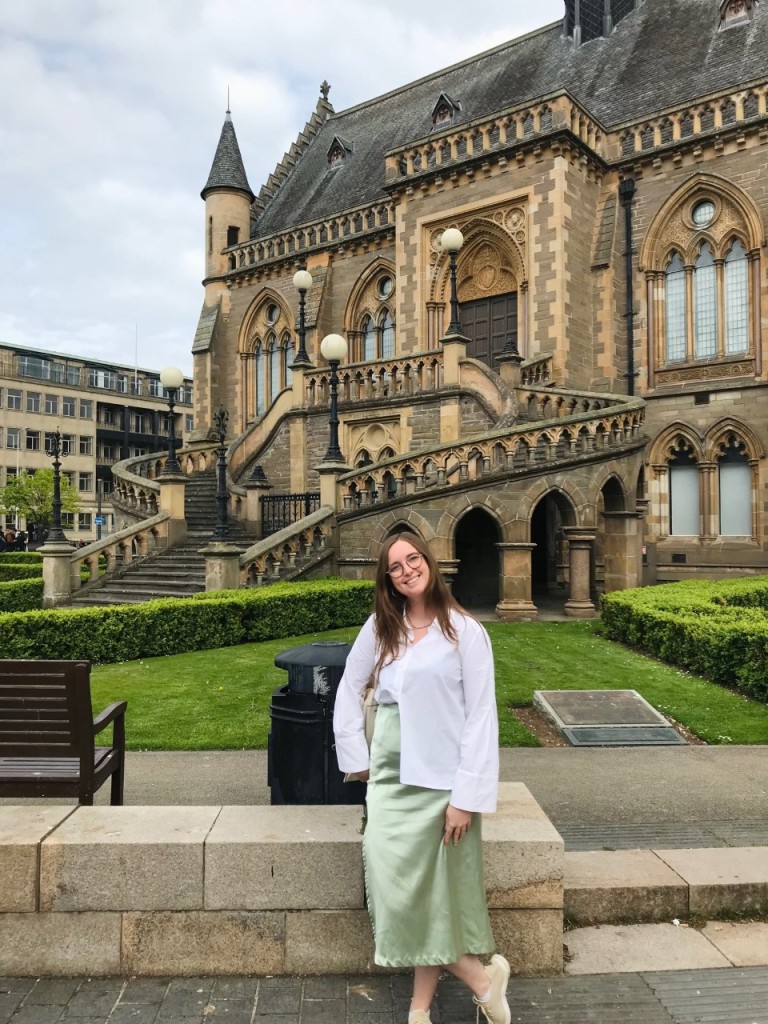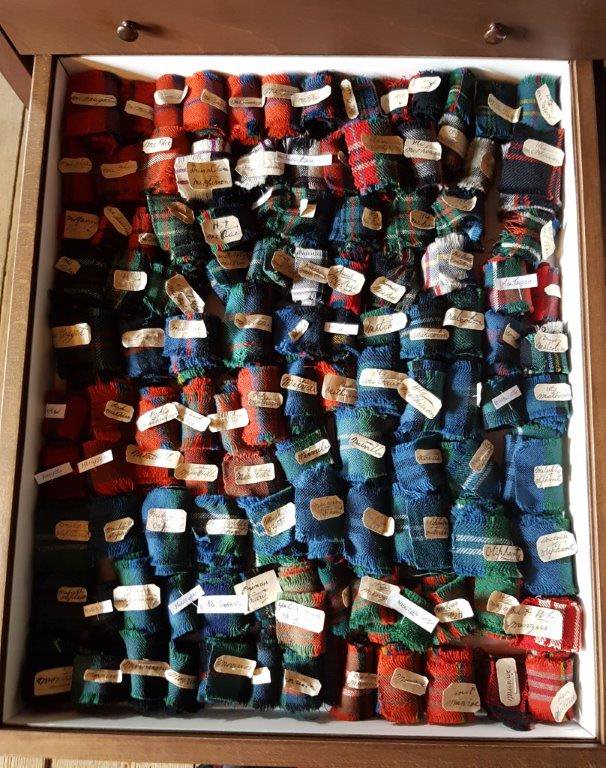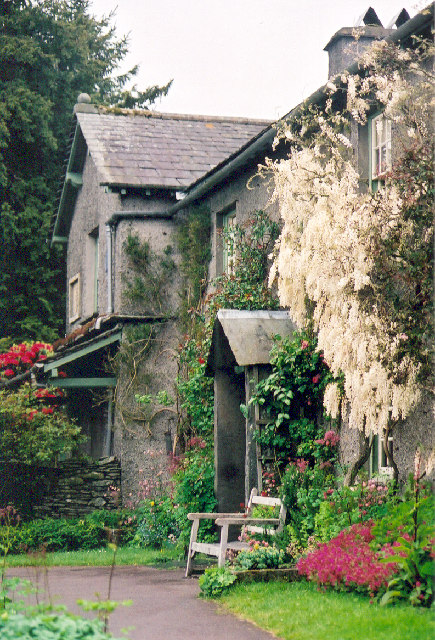We’ve done a little Q&A session with our new committee members to get to know them a bit better, and find out what attracted them to their roles…
Q: What attracted you to a career or interest in museums, and why did you want to be on the SMF committee?
Demi A: I loved history as a subject at school and wanted to purse a career in that field, when I was at Uni I started volunteering in museums to see if that was something I would be interested in and just loved it. I wanted to join the SMF committee to engage with other colleagues and feel part of the sector. I’m part of a small team at the Scottish Football Museum and thought it would be great to have a network to feel more involved.
Niamh A: I have actually wanted to work in museums from a very early age: during a primary school activity we had to bring in 2 items from our grandparents that they used during the Second World War – I brought in about 20! My enthusiasm meant that our local museum decided to give me a display case to myself, and this sparked my love for curating as I proudly visited my display for the next three weekends. I really enjoyed the feeling of presenting knowledge and history in exciting ways, and this was expanded when I found my passion for Classical Greece and art history. Coming to study at St Andrews has opened my eyes to what Scottish museums have to offer and this led to me joining the SMF to learn even more. I joined the committee to improve my career networks and knowledge of the sector with a hands-on approach. As I am about to finish my Masters qualification in Museum and Gallery Studies this has been an inspiring way to use my spare time, and to bring attention to smaller local museums as well as national institutions.

Samin A: I love history and old things, school just never really satisfied this curiosity – it was always the battle of the roses year in, year out. Learning about the Spanish Armada, French or Iranian Revolutions, symbolism in paintings, or empire and colonialism are things that I have become knowledgeable about through self-study and university later in life.
Last year I was finally able to join the Museum Studies course at the University of Glasgow which has been fantastic. I realised about halfway through the course that I couldn’t just stick with one area of heritage, I love researching, helping others, and feeling useful. Joining the SMF seemed like a good way of achieving some of those things by being able to contribute to helping others with their own professional development, as well as working with and helping to support development within the sector.
Aurica A: I’ve always been interested in art and museums and strongly believe in their role as vessels of people’s heritage, as well as forums for dialogue and exchange. After I finished university I took up a number of internships and jobs at galleries and museums but also temporarily ventured out of the sector, and there is one thing I immediately missed… most people who work in culture have one thing in common: they are creative and are passionate about art and culture, which is a big reason for my motivation to pursue a career in this sector.
Being part of the SMF committee is an exciting opportunity for me to get more closely involved with fellow museums professionals and enthusiasts across Scotland, and learn about and contribute to the most relevant issues in the sector.
Q: What is your favourite object/specimen/collection in a scottish museum and why?
Demi A: The tartan collection at the Weaver’s Cottage, they are beautiful tartan samples and show such skill. I have really fond memories of cataloguing this as part of NTS’ Project Reveal with my friend/colleague Silvia. The Cottage as a whole is just amazing!

Niamh A: I think my favourite collection has to be the impressionist and post-impressionist paintings displayed at the Scottish National Gallery in Edinburgh. I always find when visiting this upstairs gallery that the impact of the works is intense, sitting on the bench viewing works by Monet, Degas, Van Gogh and Seurat all at once feels intimate as well as impressive. These artistic greats are not lauded or singled out by the gallery, but the art is enjoyed simply for their talent. I feel the collection brings with it a sense of calm and stillness that is separate from the more traditional history paintings and portraits on display downstairs. Adjacent to the impressionists is the work of Scottish artists from the same period, and some of my favourites are members of the Celtic revival movement. As an Irish person, I love how these artists capture Scottish and Irish myths and folklore with intricate and gilded detail, I highly recommend looking deeper into this collection.
Samin A: Um, that is so hard! Definitley within my favourites is a little Rag Doll on display at the National Museum Scotland in Edinburgh. She was made by a house keeper, I can only imagine the care and love that would have gone into making her. She has a beautiful smile and her clothes are still so vibrant. When I look at her it reminds me of how much I miss my Persian family, but also thankful of the time when we do see each other.
Aurica A: When I moved to Scotland in 2020 I was immediately struck by the impressive landscape in this country. Joan Eardley’s paintings at the National Gallery of Modern Art perfectly capture the dramatic, mysterious and intimate nature of some of my encounters while traveling here. Catterline in Winter, 1963, is a great example of this.
Q: What museum, gallery, archive or historic site is next on your list of places to visit?
Demi A: Next on my visit list is Hill Top Farm, National Trust, the home of Beatrix Potter. I’ve wanted to visit for years and am finally going this month. In Scotland, next on my list is the Jim Clark Museum.

Niamh A: Surprisingly for someone mainly interested in art museums, I plan to visit the Surgeons’ Hall Museums in Edinburgh next. I have heard some great things about their collection and innovative curating practice. My sister is a medical student and used to bring me to the Hunterian in London. I would like to learn more about her interests and passions and seeing a different museum experience from what I’m used to. As one of the oldest museums in Scotland, it definitely looks worth the trip!
Samin A: Oh that is a tough one! I absolutely love the V&A in London and have not yet been able to get to the V&A in Dundee so that one is pretty high on my list! I’d also like to visit Paisley Museum and St. Mungo Museum in Glasgow when they reopen.

Aurica A: I am planning to visit The Kelvingrove Art Gallery and Museum soon! It has been on my list for a while, and I intend on finally visiting this summer. I am intrigued about how this museum seems to combine an impressive setting, a historic building and wide-ranging collection all in one.
Q: What is your vision for the future of scottish museums and its workforce?
Demi A: I hope for a better work life balance for the workforce, fair pay and realistic workload. I hope we move away from years of volunteering before finding a job, more inclusivity and less requirement for higher education.
Niamh A: I think the Scottish museum sector is experiencing an upwards trajectory in terms of visibility and accessibility. I have found it especially interesting to see the efforts of the Empire, Slavery and Scotland’s Museums Project who since 2020 have guided the Government to improve Scottish museums’ discussions of colonialism and historic slavery. They have recently made six recommendations outlining how future museums can better recognise Scotland’s complicated history, for example, the Kelvingrove in Glasgow has now adapted their display labels to discuss the legacies of empire in their collection. This is a good forecast for anti-racist museum policy across the UK. I believe the public and workforce will embrace these efforts wholeheartedly and hopefully produce a more transparent and uplifting museum sector for all communities.
Samin A: A culture of genuine equality. I think this needs to be built not only from within museums but also by empowering communities to be involved with museum projects, which will also help to encourage sustainability within the sector. A good example of this is Museums Galleries Scotland’s recent Empire, Slavery and Scotland’s Museums project which listened to the voices of thousands of community participants as well as those from within the museum sector. It will be a long and difficult path but I do believe that it is achievable.
Aurica A: Primarily I hope there is sufficient and appropriate funding support in the coming years. Another urgent focus at the moment is to keep questioning the role Scottish museums have in the global warming crisis and how they can inform the public about it through their different collections and programs.




